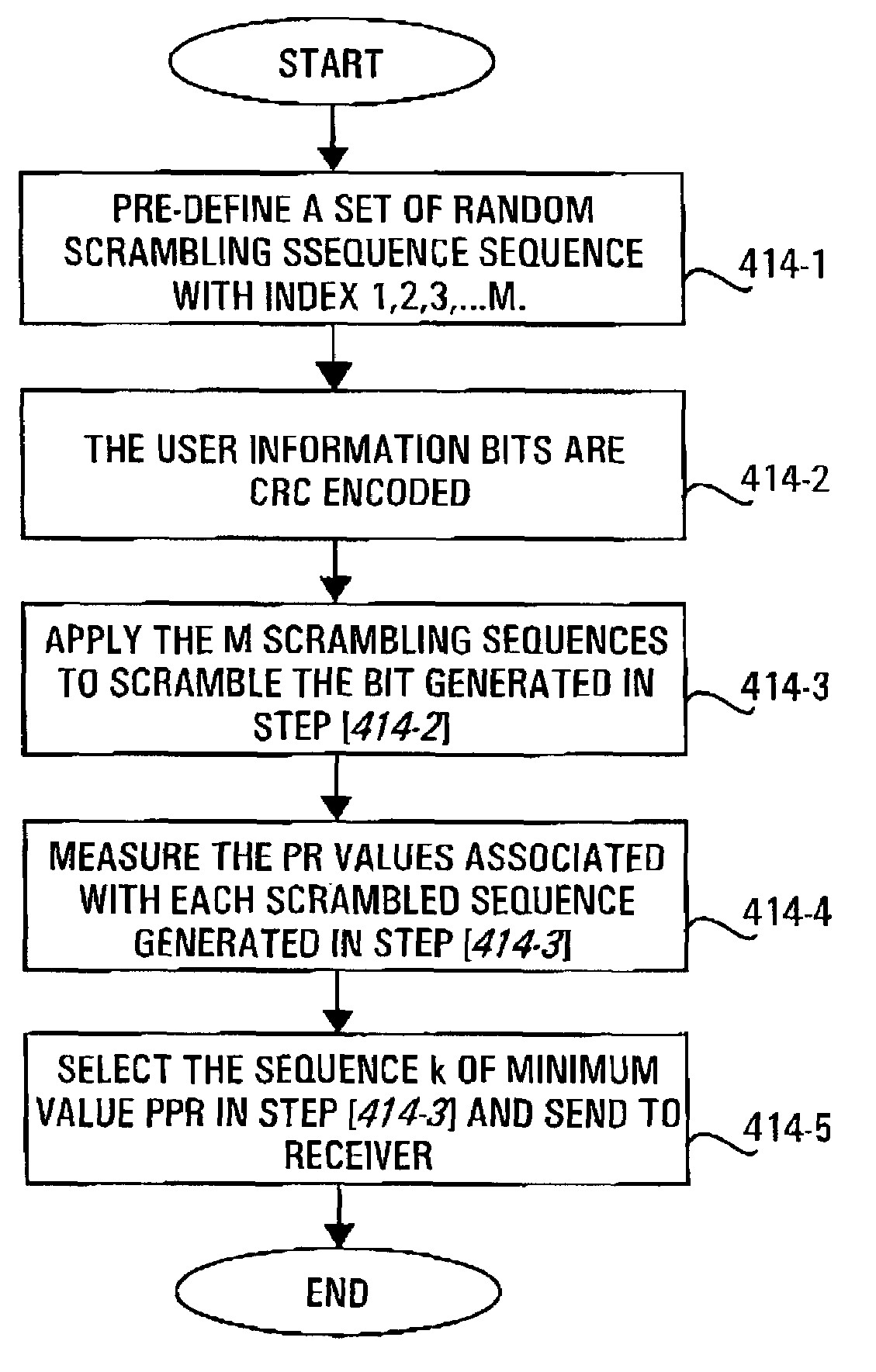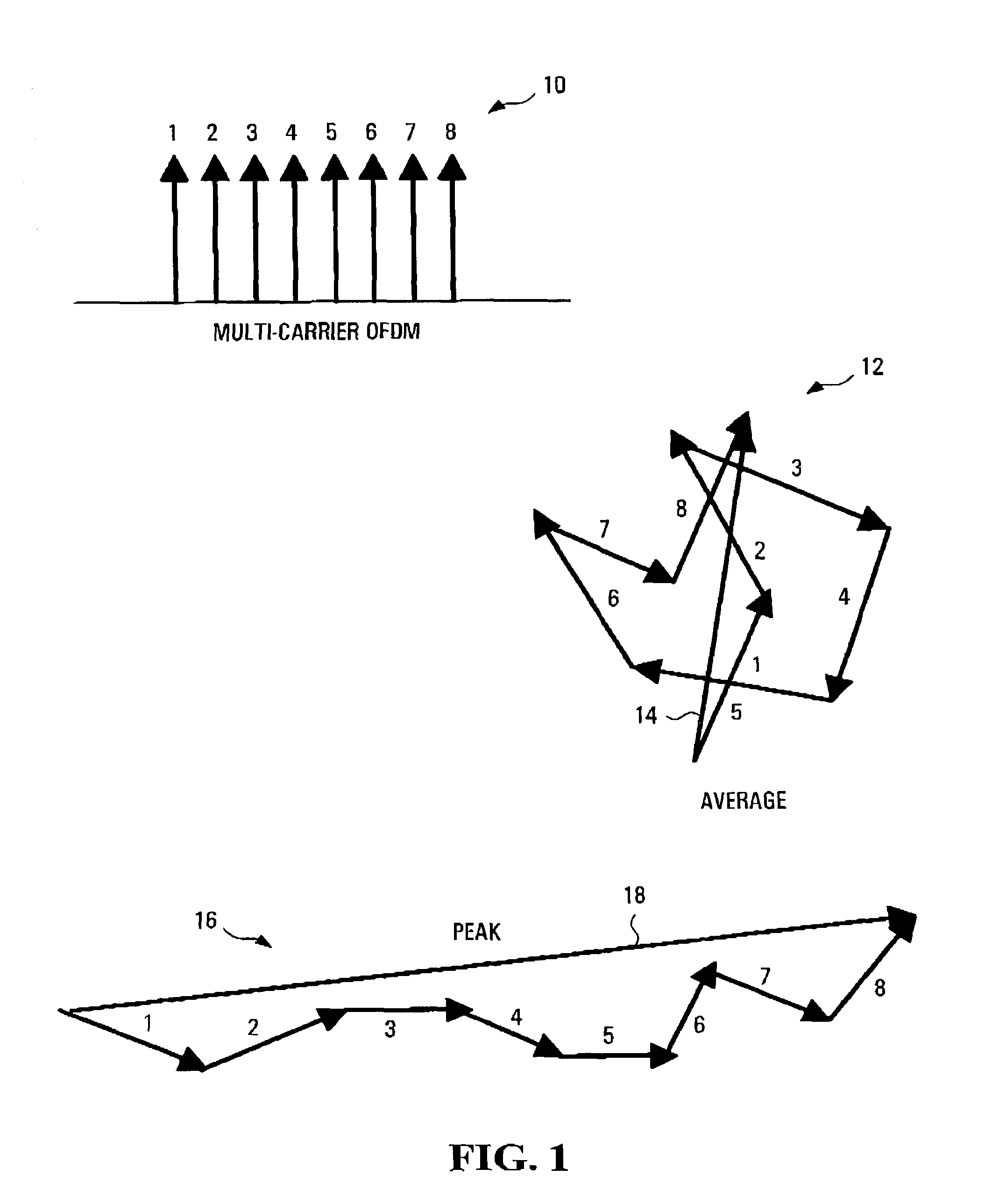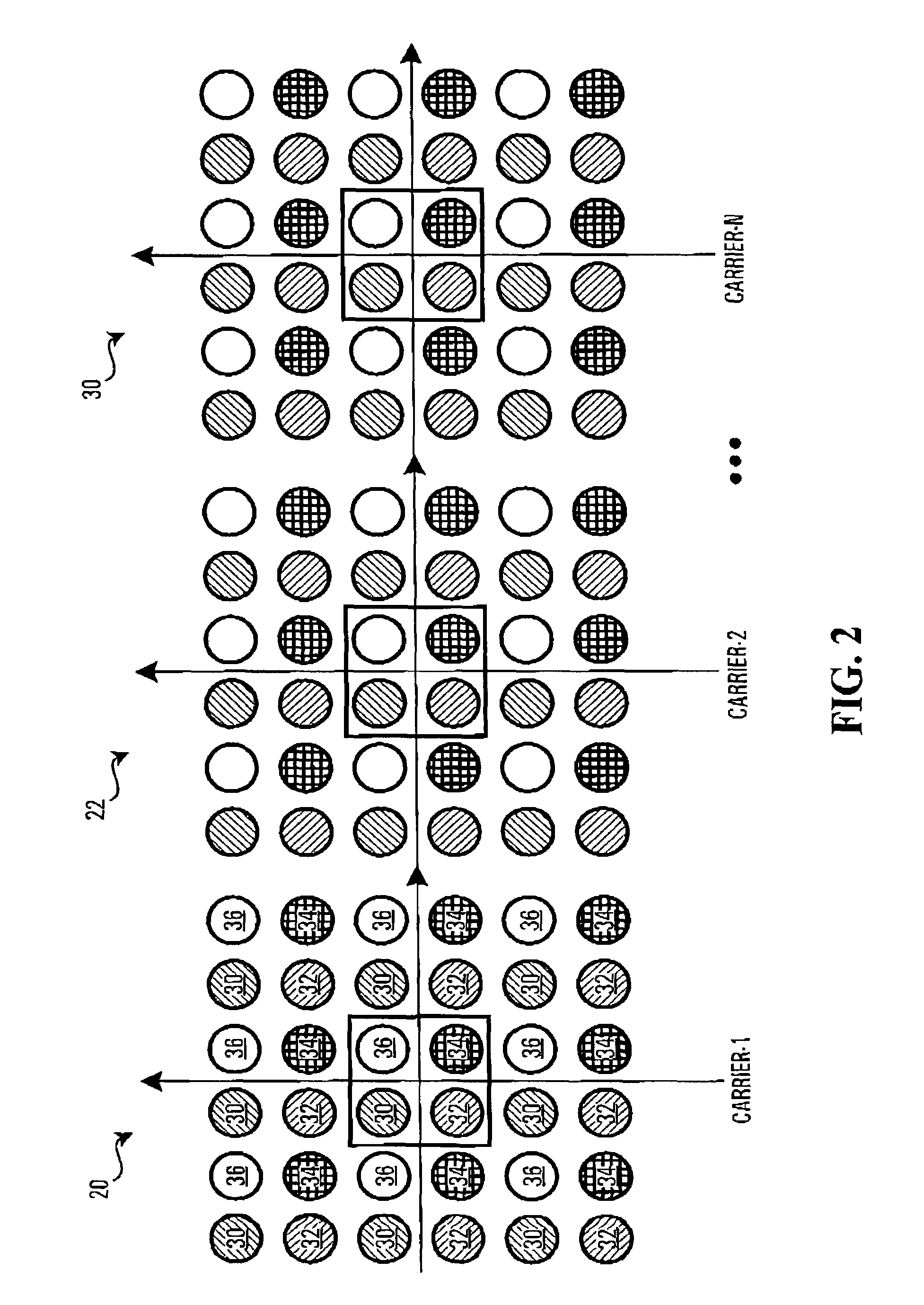Method and apparatus for scrambling based peak-to-average power ratio reduction without side information
- Summary
- Abstract
- Description
- Claims
- Application Information
AI Technical Summary
Benefits of technology
Problems solved by technology
Method used
Image
Examples
first embodiment
[0082]In a first embodiment shown in the flowchart of FIG. 3, where there is a choice of constellation points, a method is provided which involves evaluating the peak average power ratio for all the permutations (step 3-1) and then searching through all possible permutations of choices of constellation points for a set of constellation points which will result in the smallest possible peak average power ratio (step 3-2). In the above described example, this involves searching through all thus 9N different possibilities for the one which has the minimum peak power. In one implementation, this searching is done in real time, each time a given set of 2N bits is to be modulated. In another implementation, given that the answer will always be the same, then if 2N is sufficiently small, the search can be conducted a priori for each possible bit sequence of length 2N, and a table lookup produced mapping each 2N bit sequence to the corresponding permutation which results in the absolute min...
case i
le="single">0010010
[0131]The first 7 bits are 0010010 with the value of 18 that is less than T1=69. In this case, the selection will be within Set I in FIG. 7C. This value of 18 will point to a location in the corresponding look up table which contains 4 pointers each of 3 bits specifying the related 8-D elements (there are 4 of these 8-D elements). After knowing the 8-D elements, we proceed with the addressing within each of those 8-D elements by extracting an appropriate number of bits from the remaining input bits in a sequential manner and using those bits to select their related elements within the 4-D and subsequently 2-D sub-spaces by referring to the related look-up tables used for the addressing within 4-D and 2-D sub-spaces.
case ii
e="single">10100100 100100
[0132]The first 7 bits are 1010010 which is equal to 82 and is greater than T1=69. To proceed, we extract one more bit from the input which is equal to 0. Then, the first 8 bits, namely, 10100100 with the value of 164 is compared to T2=247. As the label is smaller than T2, then we are within the Set II. In this case, we are left with 49 shaping bits to proceed with the selection of the 8-D elements.
Case III: 11110111 100100
[0133]The first 7 bits are 1111011 with the value 123 which is larger than 69 and the first 8 bits, namely 11110111 are of value 247, so we are within Set II and we use the first 8 bits for the addressing in Set II.
Case IV: 11111101 100100
[0134]The value of the first 7 bits is larger than T1=69 and the value of the first 8 bits is larger than T2=247, so we are with Set III and we extract the first 9 bits for the addressing with Set III.
Fixed Tree
[0135]An example of a fixed tree implementation will now be given. A fixed tree refers to the ...
PUM
 Login to View More
Login to View More Abstract
Description
Claims
Application Information
 Login to View More
Login to View More - R&D
- Intellectual Property
- Life Sciences
- Materials
- Tech Scout
- Unparalleled Data Quality
- Higher Quality Content
- 60% Fewer Hallucinations
Browse by: Latest US Patents, China's latest patents, Technical Efficacy Thesaurus, Application Domain, Technology Topic, Popular Technical Reports.
© 2025 PatSnap. All rights reserved.Legal|Privacy policy|Modern Slavery Act Transparency Statement|Sitemap|About US| Contact US: help@patsnap.com



